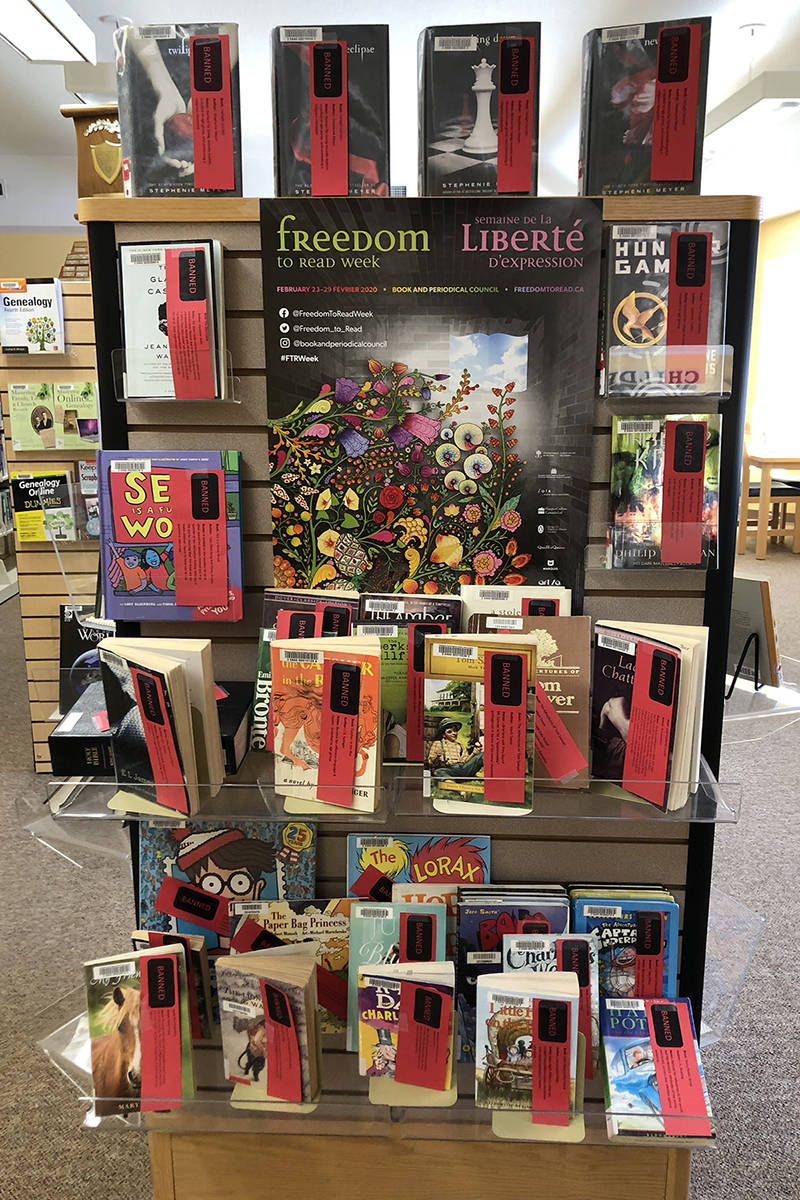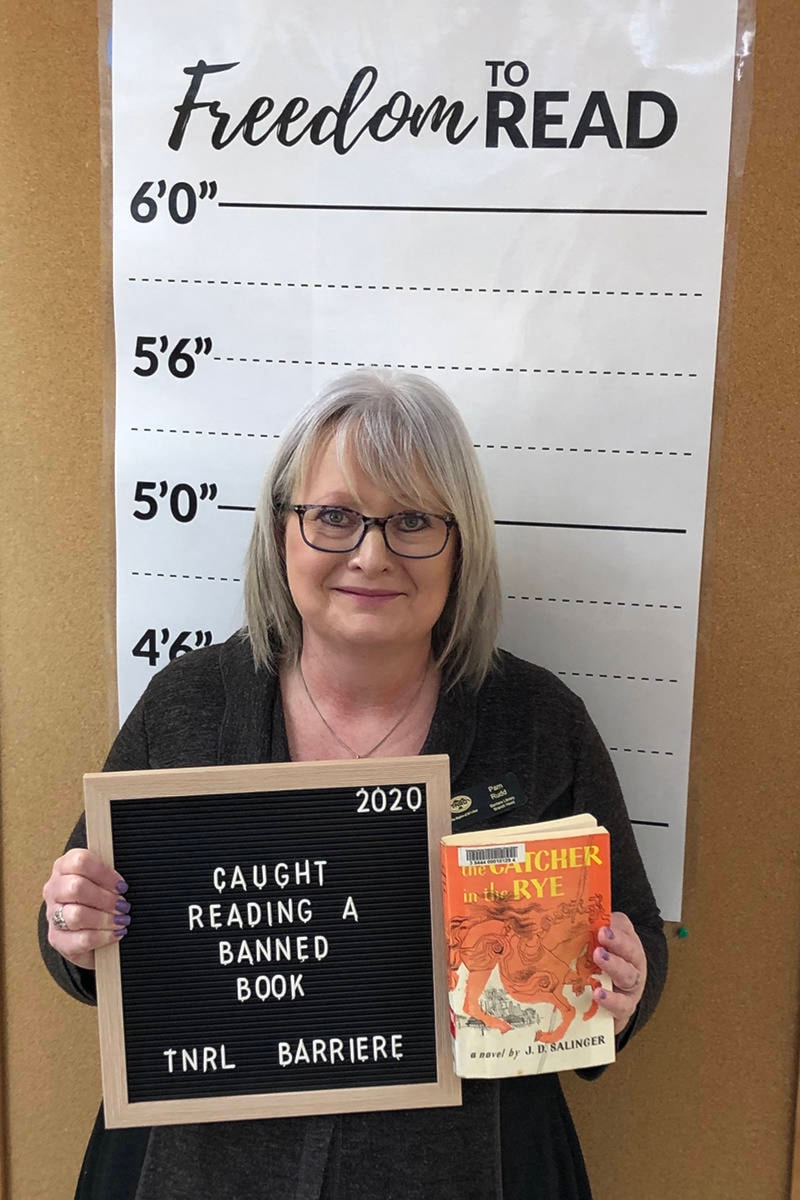The Barriere Library put together a display for Freedom to Read Week (FTRW), showcasing numerous books and stories that have been banned or challenged not only in Canada but around the world.
Library-goers could take a look at the display, choose their favourite story and have their photo taken with a banned book.
The Book and Periodical Council’s Freedom of Expression Committee announced this is the 36th year Canada has celebrated FTRW, with Barriere taking part for its second year.
“The freedom to read and write is crucial to the health of the literary arts in Canada and every year Freedom to Read Week brings to light how it can be, and often is, stifled,” said Michelle Arbuckle and Marg Anne Morrison, co-chairs of the Freedom of Expression Committee, in a press release.
Across the country, libraries, schools and community spaces celebrated reading and freedom of expression through events such as blind date with a book, free a challenged book, banned trading cards and freedom to read displays.
Related: Catch Yarn and Yap Fridays at Barriere Library
In Barriere, the library had many banned or challenged books on display. Attached to each book was a description of why the book was banned or challenged and where.
Along the shelves, a few notable banned books could be seen, such as Catcher in the Rye (for offensive language and racism), To Kill a Mockingbird (for violence, offensive language and racism) and A Farewell to Arms (depicted as a “sex novel” by a New York school district).
But, a few titles would shock almost anyone, being those of popular illustrated children’s books, young adult series and world-wide famous novels.
For example, beloved children’s series Captain Underpants has 13 books, a few spin-offs and recently became a motion picture. It has been banned in the United States on numerous occasions for “offensive language,” violence and has been considered inappropriate for the elementary age group.
Related: TNRD libraries, TRU mark Freedom to Read
Similarly, Dr. Seuss’ The Lorax, a reading requirement for many school-aged children in some counties and regions, was banned in Laytonville, California in 1989 because it was viewed as an attack on the foresting industry.
In Kansas, Charlotte’s Web was banned in 2006 because “talking animals are blasphemous and unnatural” in addition to the description of the spider dying as “inappropriate subject matter for a children’s book.”
Even world-famous and massively popular fantasy novel series Harry Potter has been banned in various countries, including New Zealand and the United States because of its “references to the occult” and “demonic attributes of the series,” such as “witchcraft, sorcery and rebellion against authority.” Just last year, the series was banned from a Catholic school in Nashville, Tenn., “amid fears that is contains ‘actual curses and spells.’”
Whatever the reason a book may be banned, the Freedom of Expression Committee said FTRW “encourages Canadians to think about and reaffirm their commitment to intellectual freedom” and that the “freedom to read should never be taken for granted.”
stephanie.hagenaars@starjournal.net
Like us on Facebook and follow us on Twitter

